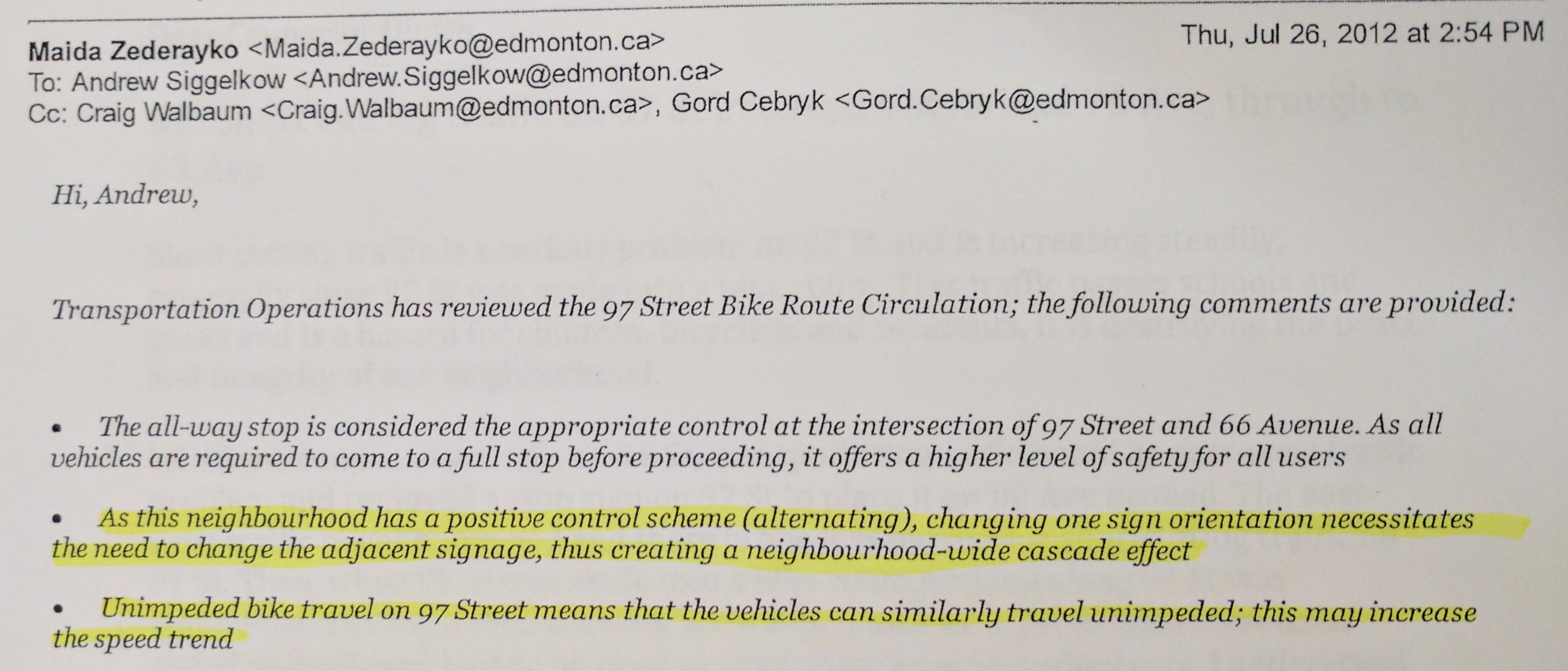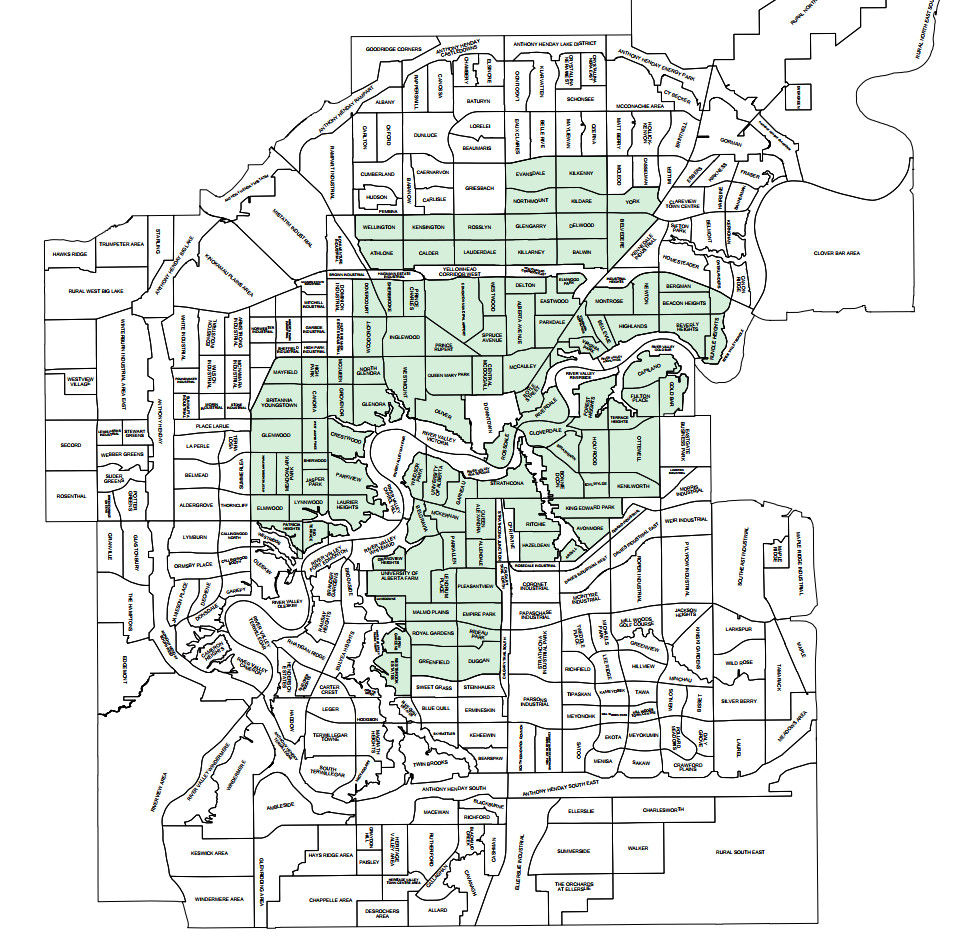The Idaho Stop is a maneuver that allows cyclists to treat stop signs as yield signs, still giving right-of-way to cross traffic, but not necessitating a full stop when there is no intersecting traffic. I previously wrote about some details and advantages in this post:
A lot of those points are high-level general points about why the Idaho Stop is generally a good policy. But what are some specifics to Edmonton that make it a good policy?
Implementing the Idaho Stop can turn mature neighbourhoods into free bicycle infrastructure.
When cyclists are asking for route recommendations, often the chorus says "use the side streets". It's good advice. Traffic tends to both have lower volumes and speeds on our neighbourhood side streets.
The problem with these streets, however, is our traffic control devices. When we perform neighbourhood renewal in our mature neighbourhoods the City aims for intersections to be "positively controlled". What that means is that every intersection has a defined right-of-way, either with a stop or yield sign for at least two directions of traffic.
Our mature neighbourhoods also prefer an "alternating" style of control. If there's stop signs, they will be posted on every other block, so that a direction of vehicle traffic won't have a long, straight road unimpeded. This means that a cyclist will have frequent starting and stopping on their ride, which can be incredibly taxing for a cyclist, but it also means that modifying any of the signs' locations can have a huge, cascading network effect.
According to a Freedom of Information request, this was a exact problem surfaced when the City was trying to install an on-street bicycle route on 97 street through Hazeldean and Ritchie.

The solution the City is looking for was developed in Idaho in 1982
There is a need for such cycle connections to use our existing roadway infrastructure. We can't install a protected grid everywhere, so "filler routes" through existing neighbourhoods must be utilized to provide necessary connections for bicycle travel.
This simple change to improve the quality of mature neighbourhood streets for people cycling gives us access to a vast network of decent bicycle routes. Note that these routes are decent. They don't replace higher quality, AAA (all-ages and abilities) infrastructure like bike boulevards or protected lanes. However, just like with transit, we have a last-mile problem for bicycles. River valley and ravine trails can transport you quite far in the city, but they don't connect directly to most destinations. Giving us overnight access to a wealth of decent last-mile routes makes choosing to cycle a much more attractive option.

The Mature Neighbourhood Overlay covers a lot of destinations
Simply allowing cyclists to proceed cautiously through intersections without stopping is a safe way to improve the quality of these routes for cyclists, without negatively impacting the neighbourhood by increasing vehicle traffic speeds and volumes.
I don't believe this is actually that radical of a suggestion: from the same Freedom of Information request I discovered that existing City procedure is to simply not install any regulatory signs on bicycle trails.
"[The] City does not typically put regulatory controls on trails or trail interfaces. Human power moves slow enough to avoid conflicts."
We know that people on bikes can safely navigate intersections without coming to a full-stop, and we know that frequent stopping is a major negative on bicycle corridors.
So let's fix the problem.
Troy Pavlek ran as an unelectable fringe candidate in the 2017 Edmonton municipal election
Keep up-to-date with the latest information by signing up to the mailing list.
Yield straight through this sign-up form to quickly get your email updates
He's also on Facebook and Twitter, and will log on whenever duty calls.